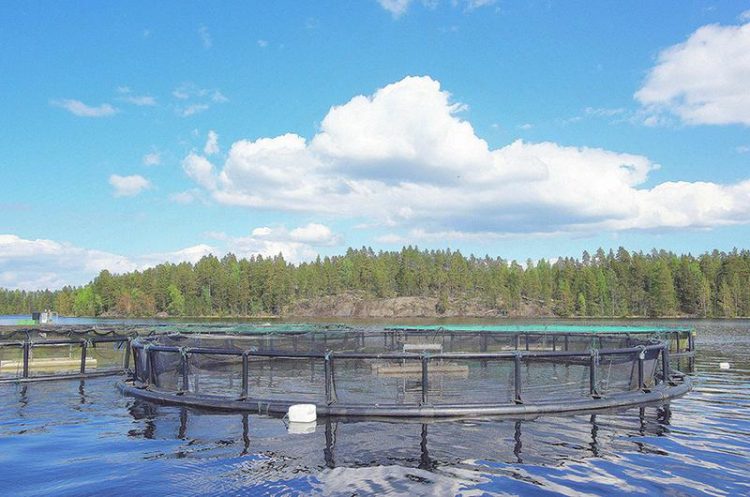Aquaculture: Clear Water Thanks to Cork

Aquaculture provides a way out of this dilemma; already today it provides more than half of the fish consumed worldwide.
Overfishing of the world's oceans is a global problem. Politics, economy, society – all of them are required to search for a solution for increasing worldwide demand for fish in the face of dwindling resources. This issue arose again recently, when EU fisheries ministers passed a noticeable reduction of the cod fishing quotas in the Baltic Sea in order not to further endanger the stocks.
The enormous pressure on wild fish stocks must be reduced. Aquaculture provides a way out of this dilemma; already today it provides more than half of the fish consumed worldwide. With an annual growth of eight percent, this industry is a future market, but one that wants to and must permanently check and improve environmental and quality standards.
Therefore, a re-thinking is currently necessary. For feeding fish in aquaculture, both in the ocean as well as in limnic waters, can have negative consequences for water quality. This is the central point from which the Fisheries Research Station of the Baden-Wuerttemberg Agricultural Center starts. The experts at this institute have developed a food additive that is very well-suited for production in aquaculture.
This invention solves a main problem of fish production: the pollution of the water with fecal material. For polluted water causes illnesses and growth problems in fish, harms the environment, and especially endangers the system stability of modern closed systems.
The special feature of this newly-developed fish food is the addition of cork. Tiny cork particles are added to the food; these remain undigested, enriching the excrement so that it floats to the surface of the water, where it can be removed in quantity quite easily. The cork additive is not harmful to fish and at the same time it is environmentally-friendly since the fish excrement collected this way can be used directly as fertilizer. Filter systems in aquaculture are loaded less heavily and cleaning cycles can be extended significantly.
The food is also suitable for use in aquaponic systems, because the excrement can then be used for fertilizing plants with little additional work.
The patents for these inventions have been granted in Norway, Denmark, France, Great Britain, and Germany. The patent has been registered in Canada and Chile. The Technologie-Lizenz-Büro (TLB) GmbH is in charge of the commercial implementation of these future-orientated technologies on a global level and offers companies opportunities for cooperation and licensing.
For further information, please contact: Anne Böse (boese@tlb.de).
http://www.technologie-lizenz-buero.com/en/news/article-view/article/aquakultur-…
Media Contact
All latest news from the category: Life Sciences and Chemistry
Articles and reports from the Life Sciences and chemistry area deal with applied and basic research into modern biology, chemistry and human medicine.
Valuable information can be found on a range of life sciences fields including bacteriology, biochemistry, bionics, bioinformatics, biophysics, biotechnology, genetics, geobotany, human biology, marine biology, microbiology, molecular biology, cellular biology, zoology, bioinorganic chemistry, microchemistry and environmental chemistry.
Newest articles

First-of-its-kind study uses remote sensing to monitor plastic debris in rivers and lakes
Remote sensing creates a cost-effective solution to monitoring plastic pollution. A first-of-its-kind study from researchers at the University of Minnesota Twin Cities shows how remote sensing can help monitor and…

Laser-based artificial neuron mimics nerve cell functions at lightning speed
With a processing speed a billion times faster than nature, chip-based laser neuron could help advance AI tasks such as pattern recognition and sequence prediction. Researchers have developed a laser-based…

Optimising the processing of plastic waste
Just one look in the yellow bin reveals a colourful jumble of different types of plastic. However, the purer and more uniform plastic waste is, the easier it is to…



